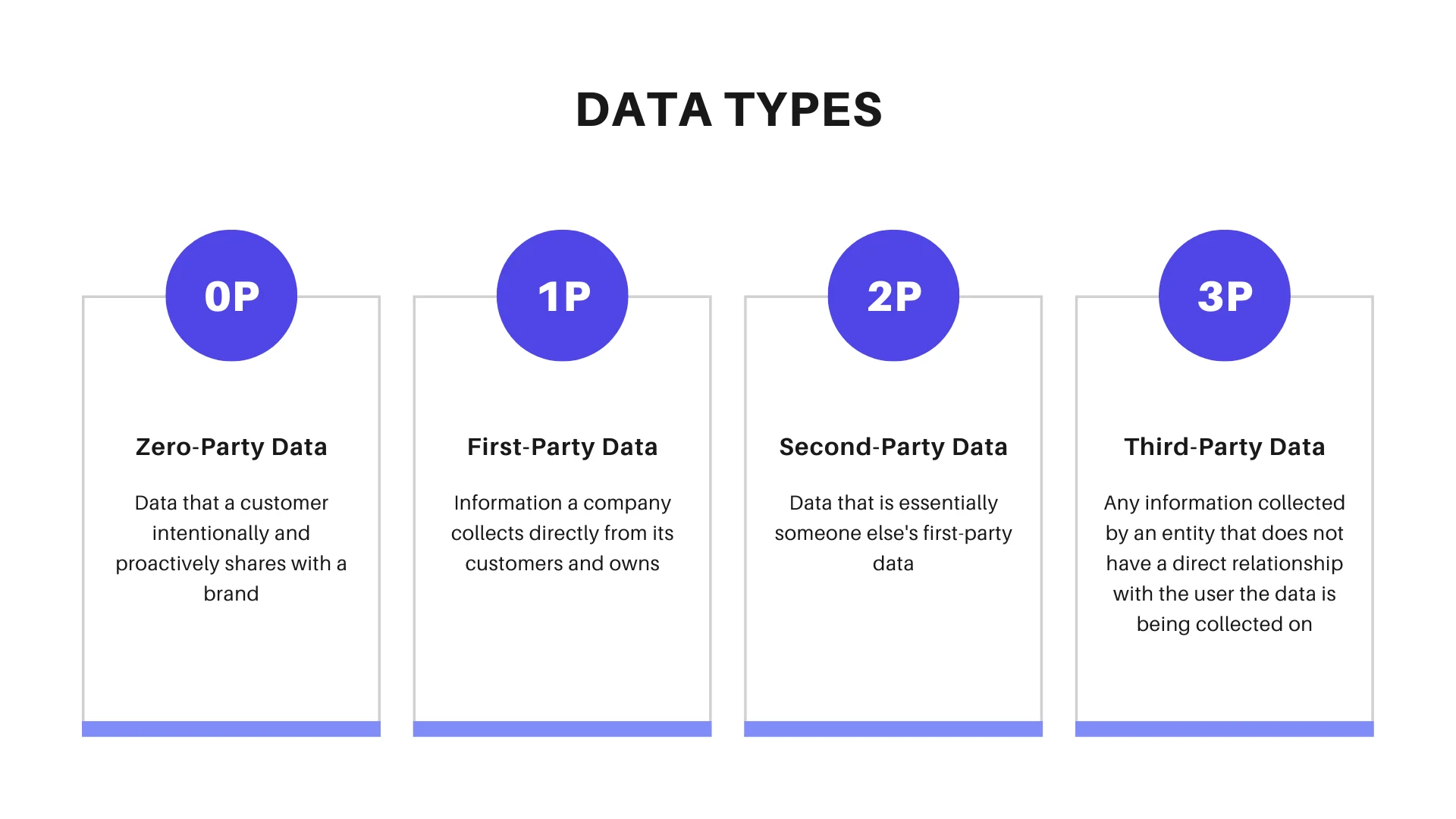- Personalization
8 Questions to Ask Before You Choose Your Personalization Tool


Personalization is a great way to provide a better experience.
We all know that personalization is the future of digital experience, but many brands are unsure about which tool is right for their business.
There are so many different options out there, and it's easy to get overwhelmed by the choices and end up making a decision that you later regret.
There is no one size fits all choice when it comes to marketing automation tools and personalization solutions for brands.
You're only as good as the tools you use. No matter which personalization solution you choose, your ability to achieve your goals relies on it. That is why understanding technical challenges upfront will help guide you towards a better decision when it comes time for choosing a personalization tool.
You need to take into consideration the nature of your business, what kind of data you have available on customers and prospects, how much time you want to invest in managing these campaigns, and more.
Before deciding, take the time to consider all areas that need attention:
Experimentation
Data Collection
Privacy
Segmentation
Cross/Omnichannel Capabilities
Integrations
To make the decision-making process easier, here are 8 questions you can ask before choosing your personalization tool.
8 Questions You Need to Ask Before Choosing Your Personalization Tool
Q1: What type of customer data can it capture? Does it allow you to use various data sources to feed personalization?
Customer data is the fuel that powers personalization.
The more you know about your customers, the better you can serve them. This is why capturing and understanding customer data is so important for personalization. It's one of those things that actually make a difference in creating effective personalization campaigns and improving overall customer engagement.
There are basically four types of data you can use for personalization:

Zero-Party Data: The information that a customer freely provides to a company is referred to as zero-party data.
First-Party Data: First-party data is information about a customer collected directly by a company through its own channels and sources.
Second-Party Data: This type of data is the data a company didn't collect. It's basically secondhand data or some other organization's first-party data.
Third-Party Data: Third-party data is information that has been collected from multiple sources, aggregated into a single dataset, packaged, and sold.
So, when choosing a personalization platform for your business, ask yourself:
Which type of customer data can it capture?
Does it allow you to use different types of data and various data sources to feed personalization activities?
Q2: Which type of customer segments does it allow you to create?
The first step of personalizing the experience for each individual is segmenting them. So that messages and content are relevant to your audience and more likely to resonate with them.
The more accurate you can be with segmentation, the better chance you have at making an impactful statement that will drive conversions. For this reason, it's important to use more segmentation methods to understand your customers better:
Demographic Segmentation
Psychographic Segmentation
Technographic Segmentation
The segmentation process starts with identifying specific groups of people that share common characteristics, then dividing them into smaller subgroups within those larger segments or clusters. This enables brands to better communicate with these different groups by tailoring content for each cluster's needs and lifestyle interests.
Customer segmentation also helps define the different types of customers you have and allows you to set priorities for your teams so they can focus on a certain group of people at a time. This makes it easier for them to achieve their goals while still giving every customer the attention they deserve.
To sum up, creating customer segments is the first step of personalization. Therefore, before choosing a personalization tool, you need to ask yourself:
Which type of customer segments does it allow you to create?
Q3: Does it allow you to create anonymous visitor personalization?
As said earlier, data is the fuel for a personalized customer experience.
The more you know about your visitors, the better you can tailor their experience based on their needs, preferences, and interests.
However, only 2-3% of visitors log in to their accounts when visiting a website. The majority of visitors are anonymous.
A lot of companies don't know who their visitors are. Therefore, their personalization efforts are going wrong.
For this reason, they think that they can't personalize the experience for each visitor, which means they're missing out on sales and customer loyalty that comes with a tailored interaction. However, anonymous visitors do not mean that you know nothing about them.
Anonymous visitor personalization is a simple but powerful solution to this problem. It allows you to create a unique experience for each anonymous visitor while also tracking their behavior across multiple sessions so you can learn more about them over time. This way, when they do make an order or subscribe to your newsletter, you already have data on what interests them and how best to serve them in the future.
Therefore, before deciding on your personalization tool, ask yourself:
Does it allow you to create anonymous visitor personalization via different ways such as cookie-matching, real-time activity tracking, IP identification, and so on?
Q4: How frequently can it optimize personalization? Does it have the ability to work on real-time data?
Real-time personalization is the ability for companies to tailor their interactions with each customer or prospect based on what they need at any given time.
In other words, real-time personalization is about understanding and targeting your customers at the moment, not just for future purchases but also during their journey.
Personalized offers can help boost lifetime value by providing additional incentives or content based on real-time data.
To sum up, real-time optimization can help you avoid the pitfalls of personalization, increase engagement and improve a customer's on-site experience. This will ultimately lead to increased bottom-line revenue for your business.
So that you need to ask yourself:
How frequently can it optimize personalization?
Does it have the ability to work on real-time data?
Q5: Which type of personalization does it support?
There are basically two types of personalization that are commonly used:
Predictive Personalization
Rule-Based Personalization
Rule-based personalization allows you to create specific rules that will trigger changes in content on your site depending on what actions users take.
For example, suppose they visit certain pages or sections of your site multiple times per week. In that case, you can change their experience by displaying different types of information than if they only visit once every few months.
Predictive personalization is a type of personalization that uses data collected from previous actions or purchases to predict what consumers may want in the future.
In other words, when done well, predictive personalization can be incredibly powerful at turning customers into repeat buyers by showing them product recommendations they are most likely going to respond to positively.
When deciding on your personalization solution, ask yourself:
Which type of personalization does it support?
Does it support rule-based personalization, predictive personalization, or both?
Q6: Does it have experimentation and testing features?
We are all aware that personalized experiences are an integral part of the modern customer journey. Businesses that can deliver these personalized experiences more effectively will have a significant competitive advantage over those that cannot.
However, personalization is not as easy as someone thinks or straightforward a task. To be successful, it requires significant thought and planning with technological tools to engage customers effectively on an ongoing basis so they will come back for more of your products/services.
The good part is that there is a straightforward solution for this challenge: testing and experimentation.
Testing different variations for personalization offers businesses opportunities to learn more about their customers and discover what resonates most with them.
You need to experiment and iterate on everything when it comes time for your personalization campaign. The right approach will come with data-driven decisions rather than guesses without any factual backing behind them.
In short, for successful personalization, you need to test, learn, and iterate. Therefore, you need to ask yourself:
Does it have experimentation and testing features?
Does it allow you to create A/B tests?
Q7: Does it support and synchronize multi/omnichannel personalization activities?
One of the most important questions you should be asking yourself when looking for a personalization tool is which channels does it support?
Email
Blog
Chatbot
Mobile App
Website
...
These are some of the channels customers interact with brands.
According to Google, an average person switches between an average of three devices to complete a task. And they use over 10 channels to communicate with businesses.
So, it's easy to say that: omnichannel personalization is one of the next big things in customer experience.
Yes, the future of customer experience is more connected and personalized than ever.
Technology has made it possible for organizations to connect user data across every possible touchpoint.
Mobile or web is no longer enough to connect with consumers; brands need a presence across many touchpoints so they can craft exceptional omnichannel experiences that will revolutionize the customer experience.
Before choosing a personalization engine, determine which channel you want to personalize. After that, ask yourself:
Which channels does it support?
Does it synchronize multi/omnichannel personalization activities?
Q8: Does it integrate with your analytics tool, CDP, CRM, and other technology stacks?
As technology advanced, brands started using different tools for specific needs. Therefore, it's important that your personalization tool seamlessly integrates with your current tech stack.
Integrating your personalization tool with the rest of your technology stack is key for a seamless customer experience. Ideally, everything needs to work together to make it easier and more appealing for both customers and employees.
Long story short, it should be easily integrated with your current tech stack:
Analytics
Experimentation
Customer Relationship Management Tool
Email Service Provider
Customer Data Platform
And, other tools and software you're using
Before deciding on your personalization solution, answer the following questions:
Is it easy to integrate with other technologies?
Does it have integrations with your current tech stack - analytics tool, customer data platform, customer relationship management tool, email service provider, etc.?
The Bottom Line
Personalization is an important aspect of digital marketing.
It provides your customers with the sense that you know them and are catering to their needs, which will increase trust in your brand.
There are different personalization solutions out there.
It's hard to know which one will meet your needs, and it can be even harder to choose the right tool when you have different options available.
So before you jump into a new tool, make sure that you ask yourself these 8 questions first. This way, no matter what personalization software or platform you choose, it will be the best choice for your company on all levels.
Get in touch to start creating composable personalization within your content workflow. In minutes